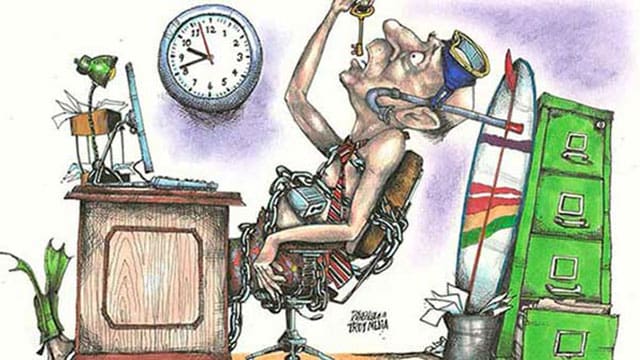 Bureaucracy begats bureaucracy, building its own demand and transforming people into managers designed to meet bureaucratic needs.
Bureaucracy begats bureaucracy, building its own demand and transforming people into managers designed to meet bureaucratic needs.
A bureaucracy designed to serve patients ends up serving its creators instead and protects those who work inside.
Economist William Niskanen offered a definition of bureaucracies in his book Bureaucracy and Representative Government. Roughly speaking, he says, 1) bureaucracies consist of people who do not earn their income from what is left over after costs are subtracted from revenues, and 2) bureauractic revenue does not come from the sale of output per unit rate.
Many people refuse to discuss bureaucrats or bureaucracy for fear of causing offence. The managerial and chattering classes see such talk as impolite, ill-defined, or perhaps unhinged. But forcing a word out of fashion – or relabelling it as management or administration – does not remove the reality it describes.
We need bureaucracy, just like we need surgery. Surgery saves lives when nothing else will do. At the same time, there is nothing that surgery – or bureaucracy – cannot make worse.
Organizations build bureaucracy to decrease risk. That is, to slow things down, leaving time to think twice.
 |
| Related Stories |
| Health care user fees promote equity and efficiency
|
| Tone-deaf politicians ignore the realities of health care
|
| Why our health system treats Canadians poorly |
For example, hospitals create communications departments to decrease the likelihood of bad press. Bad press about patient care trumps concern over patient care itself.
Every element of service – forms, checklists, and audits; computer passwords, authentication, password expiry, and mandatory sign-off; HR credentialing … the list is endless – creates its own demand for bureaucratic process, with its imprimatur of orderliness and excellence.
But building teams of professional managers (bureaucrats) comes at significant cost as they struggle to justify their own existence but cannot point to profit or improved patient care to prove their worth.
Instead, they create committees, collect surveys, redesign org charts, and perform market scans. Unfortunately, such make work trumps the compilation of data that may indicate the need for change. Bureaucrats are the antithesis of entrepreneurs.
The size of a bureaucracy also serves as a surrogate for value — especially amongst fellow bureaucrats. Bureaucrats focus on inputs, not outputs. Activity trumps accomplishment. Quality of services mean little to the bureaucrat. Patients are simply threats to otherwise good performance data.
No organization of any size can escape bureaucracy. Given that fact, what can be done?
Limit the dose
Treat bureaucracy like dynamite or digoxin (a heart medication). Each serves a purpose when nothing else will do. But dosage matters, and neither one should be the only tool for every job.
Consider a 10:1 ratio for new bureaucrats. Hire at least 10 workers, nurses, or technicians for one manager.
Dilute the impact
Bureaucrats should work part-time in practical service delivery. The fact that this point sounds outrageous indicates the depth of our devotion to bureaucracy and bureaucrats.
Try to imagine an MBA portering a patient or spending a few hours delivering meals to patients warehoused in hallways, or an executive spending time waiting to offload an ambulance stretcher.
Outrageous, maybe, but an organization wastes more from bureaucratic inefficiency than from having bureaucrats see how bureaucracy slows service delivery.
Choice
Monopoly is anathema to quality.
If patients have no choice but to come to you for service or care, then you have no idea what they really think.
Choice drives quality. Choice assumes the chooser knows enough to decide what is best. Bureaucracy thinks the bureaucratic designer knows best.
Keeping score
The Net Promoter Score (NPS) is the next best option, after choice. It asks, How likely are you to recommend this service to someone else?
It is a brutal score. CEOs hate it, and they only embrace an NPS to offset greater risk or criticism.
The NPS analogue for a health care staff survey is: How likely are you to fight to keep your colleague on the team if senior management were trying to fire him?
Bureaucracy is necessary but dangerous. It pulls limited clinician resources away from patient care.
We need a frank discussion about bureaucracy and patient care. If we do not find ways to cut back and limit the growth of bureaucracy, patient care will continue to struggle for attention.
Shawn Whatley is a physician, past president of the Ontario Medical Association, and a Munk senior fellow at Macdonald-Laurier Institute. He is the author of When Politics Comes Before Patients – Why and How Canadian Medicare is Failing.
For interview requests, click here.
The opinions expressed by our columnists and contributors are theirs alone and do not inherently or expressly reflect the views of our publication.
© Troy Media
Troy Media is an editorial content provider to media outlets and its own hosted community news outlets across Canada.


